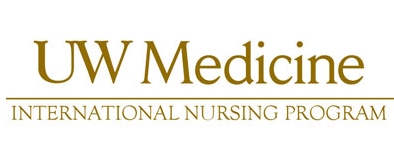The Burden of Illness in Low to Middle Income Countries (LMICs):
Severe illness and infection occur wherever people get sick. The vast majority of severe illness and avoidable deaths in the world occur in low to middle income countries. For example, 16 million of the 19 million cases of severe infection, known as sepsis, occurs annually in low resourced settings. While patient mortality is difficult to decipher, it is believed a significant majority of these patients die.
In high resourced settings we have developed specially trained nurses and specialized units to care for ill patients. However, in many financially constrained parts around the world, such resources and trained nurses do not exist--where they would be the most valuable. These lack of resources means that people in poor areas bear a disproportionate burden of severe illness and deaths. Because three-quarters of the world's population lives in these parts of the world, easing this burden is a critical global health issue.
The Burden of Insufficiently Trained Nurses:
The greater burden of illness and associated deaths in low resourced settings is due to multiple factors including a dearth of human resources--more specifically, a scarcity of highly trained nurses on the frontlines of patient care. And yet despite this well understood fact, less than 2% of the global health expenditure is spent each year on health professional education and training.
There are many adverse impacts on the health and well being of entire populations secondary to a lack of well trained nurses. Without continued education, research has found nursing care lacks evidence, innovation, and safety. The effectiveness of care delivery and patient outcomes are also greatly impacted. For example, some impoverished nations find up to 80% of their severe illness deaths occur largely because those countries lack adequately trained healthcare providers. In low resourced settings, people who could otherwise be treated are dying-up to five times as frequently as they do in rich countries. Coupled with the greater burden of serious illness, LMICs also bear a disproportionate amount of understaffed and undertrained providers, trying to offer best practices in resource limited settings.
This lack of well trained nurses has the largest impact on the efficacy of global health expenditure. The worlds investment in health services cannot be assured in the absence of trained nurses. In fact, nurse training discrepancy is found to be one of the greatest obstacles to truly obtaining health equity for all. In order to achieve our global goals and maximize our investment, highly trained nurses is proven to be a necessary first step.
Developed nations have created continued education and training systems to deal with these adverse outcomes. Their nurses receive a 3-6 month orientation with one-on-one nurse precepting by a more experienced nurse. This training is then followed by continued educational conferences, online learning, and annual competencies. Yet, despite the overwhelming use of these evidence based programs in high resourced settings, few comparable initiatives have been implemented in low resourced settings where they would have the greatest impact.
World Health Organization finds countless lives could be saved and many life-threatening conditions prevented or managed, through inexpensive, low-tech interventions by skilled health-care providers. Yet by far the largest group of those providers-the nursing workforce- remains understaffed, undertrained and poorly deployed.
Why We Invest in a Stronger Nursing Workforce:
Nurses play a pivotal role in all areas of health service delivery: promotion, prevention, treatment and rehabilitation. They are on the front lines of patient care. Therefore, strengthening the nursing workforce has a profound impact on each level of the patient experience--the way no other profession can.
Leading health institutions unanimously support that nurses, engaging in direct contact with patients, have the greatest impact on patient outcomes. The relationship between the two has been well documented, directly connecting better nursing care with improved 30 day survival rates. In fact, several large scale studies found that a better educated nurse workforce was associated with lower patient mortality.
Educated Nursing Workforce = Saving Patient Lives
The reason education is so powerful in improving nursing care and patient outcomes, is it grows a more autonomous nurse. This empowerment results into earlier disease recognition, faster delivery of care, and a safer patient environment. Nurses supported to practice within the full scope of their license and training, provide a comprehensive range of services at all levels of the health system. This ensures that all care is effective, efficient, and delivered to where it is needed most. Therefore, to achieve universal health coverage, the quality, quantity, and relevance of the nursing workforce must be assured.
That is why we believe in those who have the greatest impact on patient's lives. We choose to invest, empower, and elevate nurses to play a greater role in the healthcare team both here at home and abroad.
Low to middle income countries bear the greatest burden of disease and have the fewest resources to educate their nursing workforce. But research has shown that improving health in these parts of the world is not hopeless-- or expensive. Simple measures and inexpensive education and training of the most impactful healthcare provider, nurses, may save millions of lives.
We believe in the POWER of nursing. Do you?

